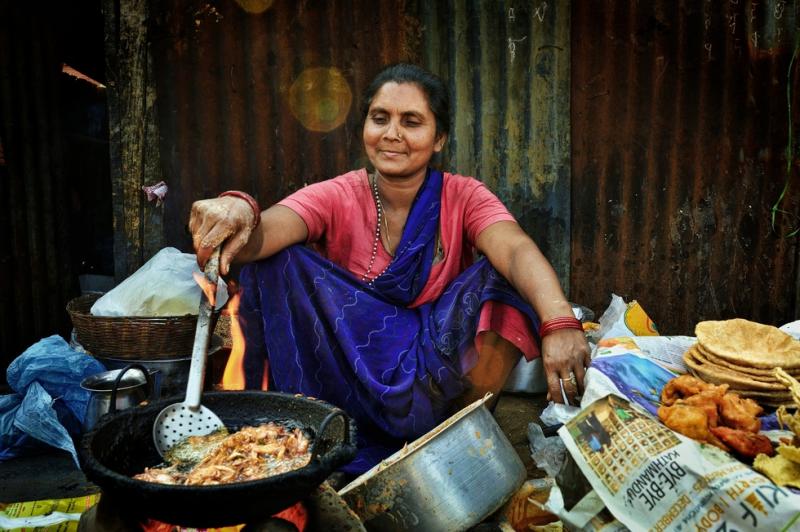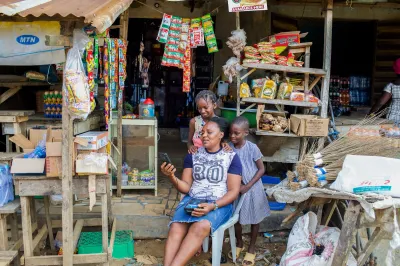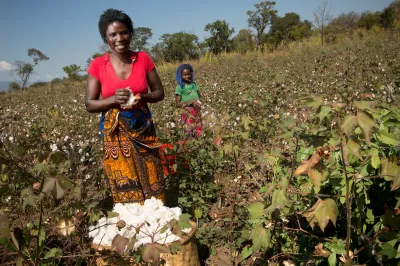Mind the Gap: Women and Access to Finance
The Global Findex reveals remarkable global progress in the world’s ability to reduce the number of unbanked in only 3 years: between 2011 and 2014, 700 million adults worldwide became account holders. Yet the data also reveals a glaring gap: women lag behind men when it comes to financial access. Globally, this gender gap is seven percentage points, while in developing countries, it is nine percentage points. This gap between men’s and women’s financial access is even starker in some regions – for example, South Asia has an 18% gap in ownership of accounts and the Middle East has a 10% gap. The gap exists also for access to formal savings or credit.
With all of the global progress, why would a gender gap persist?
In a recent New York Times article, Melinda Gates heralds the progress made in digital financial services as one of the most important means to accelerate access to financial services for women. We are seeing this happen in some countries of the world such as Kenya where account access increased from 42% of adults in 2011 to 75% of adults in 2014. For women, account access went from 39% in 2011 to 51% in 2014, a significant 12% increase. Kenya is one of the few countries where women are more likely than men to have a mobile account. Clearly digital access seems to have accelerated, not hindered women’s financial access in Kenya.
But gains from digital financial services is not automatic for all people, as evidence from other countries demonstrates. In the 13 countries in Africa where digital financial services is 10% or greater, the narrowing of the gap in access for women is not guaranteed. Countries such as Uganda and Tanzania are not seeing significant increases in access and usage among women. In an earlier CGAP blog, Leesa Shrader shows that despite the enormous gains made in digital financial services in Bangladesh with bKash, women are being left behind.

The problem starts with the simple reality that fewer women own phones than men. In a country like Bangladesh, only 44% of women own a mobile phone as compared to 72% of men. According to GSMA, globally, there are 300 million fewer women who own a mobile phone than men. This is despite the fact that when surveyed, most women report feeling safer and that phones help them lead a more secure, connected and productive life.
In some societies, there are other barriers that may need special attention before women’s access to and usage of digital services increase. For some, illiteracy or the inability to use an English-language menu may be the cause. In these situations, women must rely on agents or male-family members to help them to transact. By giving their information to agents – who are often men – women may be setting themselves up for future harassment. The need to go through someone else, even a family member, may reduce their incentive to use digital financial services as it no longer provides the privacy or safety that they prefer and which cash may still accord.
In terms of financial access more broadly, cultural norms or legal barriers are often at the root of the limited financial access and use of any type of financial service by women. In many Middle Eastern countries, opening an account requires approval from a male guardian. Inheritance laws favor men over women, reducing women’s access to family assets and in turn the need for financial services. Cultural norms around what is acceptable for a woman to do, where she can go alone, or with whom she can interact can all serve to limit women’s access to formal financial services.
Opportunities for making inroads

The Findex data delves deeply into how people use financial services and points to some important potential opportunities that can be leveraged to expanding access. One of the more obvious places to improve women’s access to finance is to start with salaried workers who receive salaries in cash. The other is to leverage the existing payments from governments to poor people. Findex estimates that 80 million women are recipients of social benefits or wages in cash. Working with governments and the private sector to transfer these payments to bank accounts would be a significant step in expanding financial services. However, opening an account is only the first step toward financial inclusion and much more would be needed to ensure that these accounts provide the convenience, cost-savings, increased security, and functionality to improve their welfare.
Improving access to finance is at the center of improving gender equality and increasing the economic freedoms and opportunities that women have to contribute to their families and societies. But in order to address the persistent gap in financial access for women, we need to fully understand the complexity of the problem and go beyond simple fixes. It is not just about issuing newly minted pink cards that will somehow miraculously improve women’s financial access. We need deeper research and analysis at the local level as what may appear to be a breakthrough in one market may be an obstacle in another. We need collaboration across different stakeholders as often the bottlenecks are not about financial services at all, but the societal norms or laws that shape the choices that women make. Fortunately, we are at a time where the interest among the private sector, policy makers, and funders align as it is increasingly evident that development cannot happen for only half of society. With this constellation of focus, we may finally see big leaps in progress for women’s financial access in the next round of Findex in 2017.




Comments
The survey also suggests some
The survey also suggests some bright spots, with one of the most gender-unequal countries, Saudi Arabia, showing the greatest financial access gain for women -- from 15% to 61% in just three years. Iran, Turkey, and West Bank all significantly narrowed the gender gap as well, as did Costa Rica and Mexico. I'm not sure what to make of it, but it would be interesting to explore what, if any, policies may have contributed to this apparent shift.
Meanwhile, as you allude to in the blog, mobile money is actually further widening the gap, with mobile adoption among men almost universally outpacing women -- by margins at least as big or bigger than those in the traditional financial system.
Narrowing the gender gap will remain a challenge for some time to come.
Add new comment